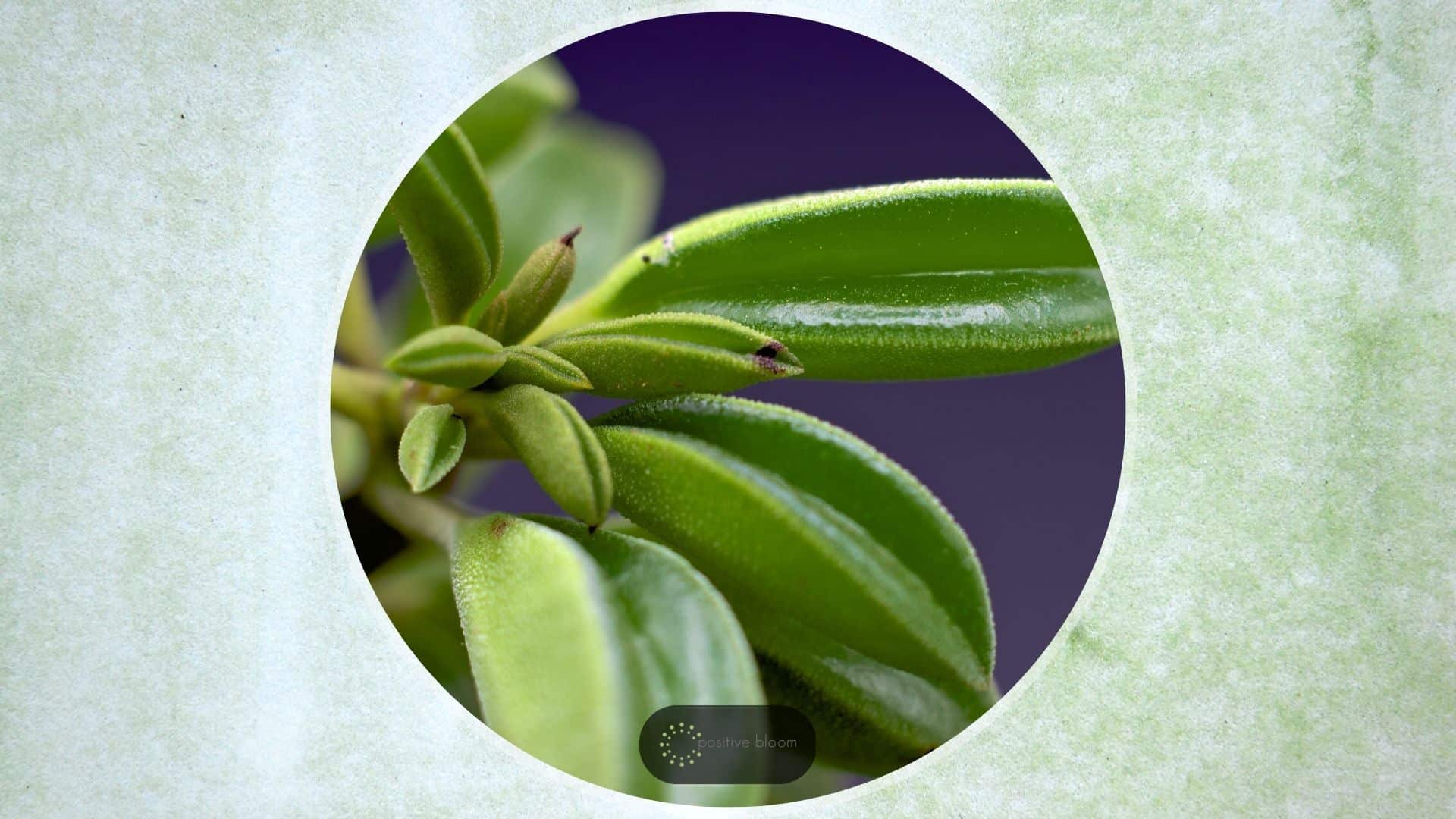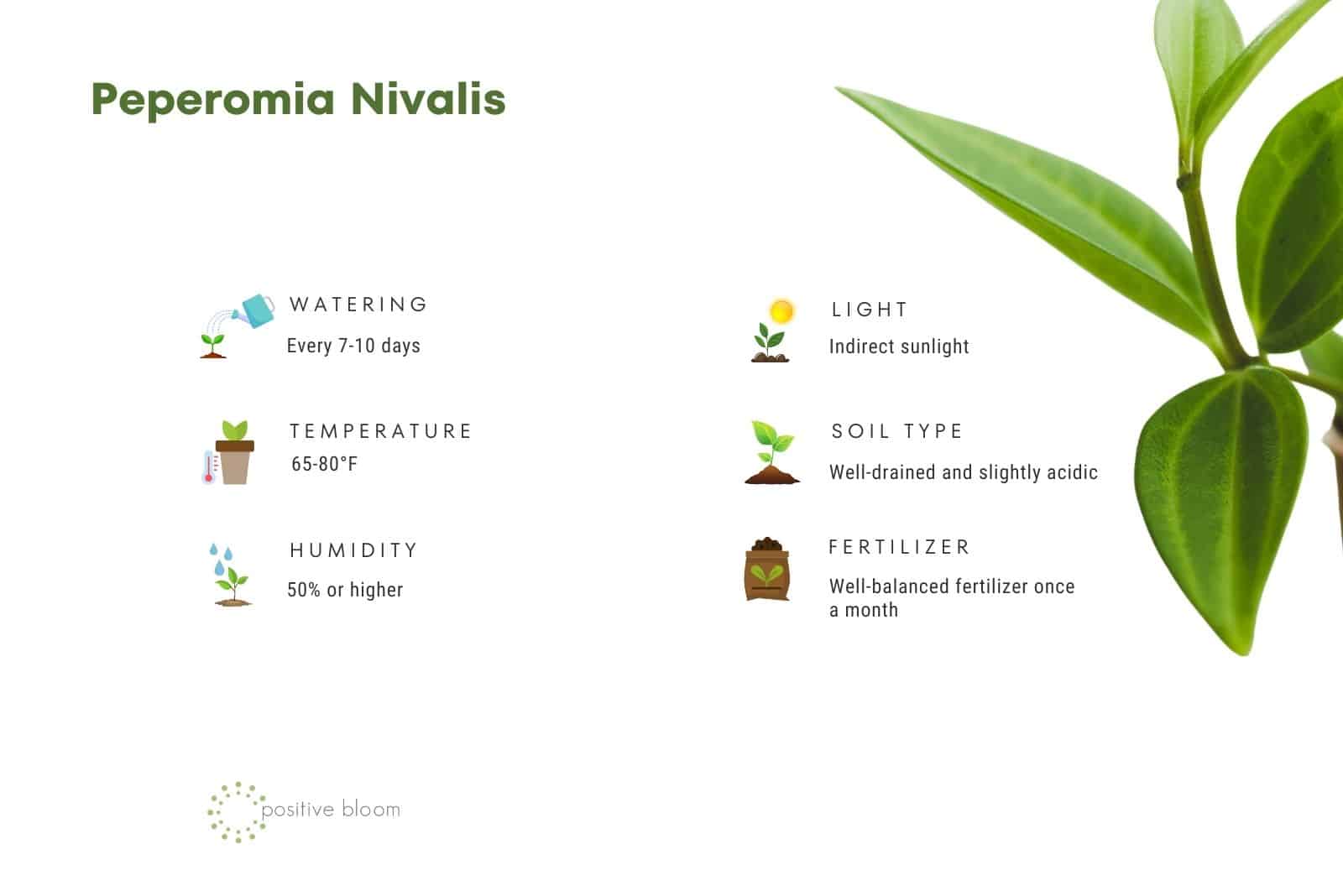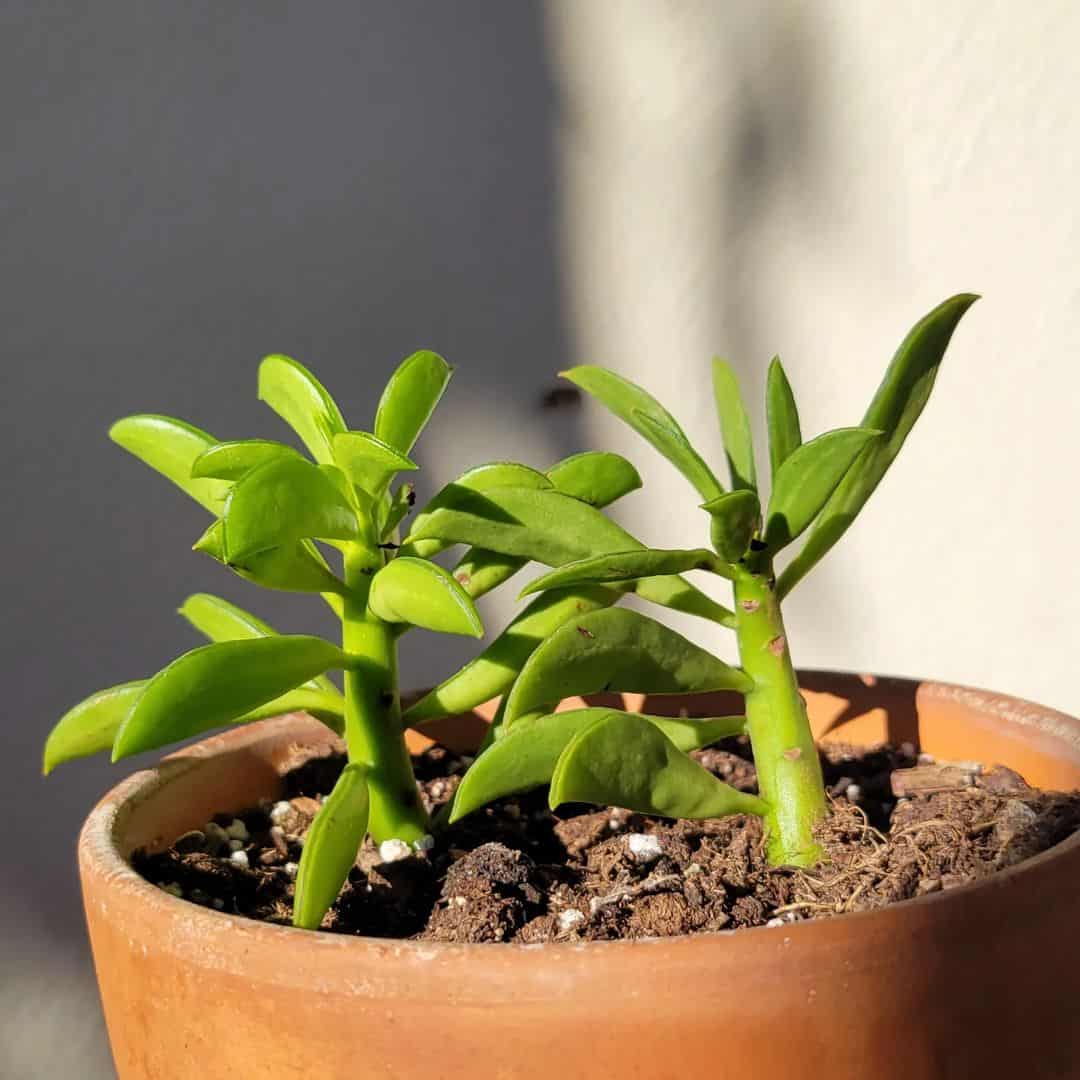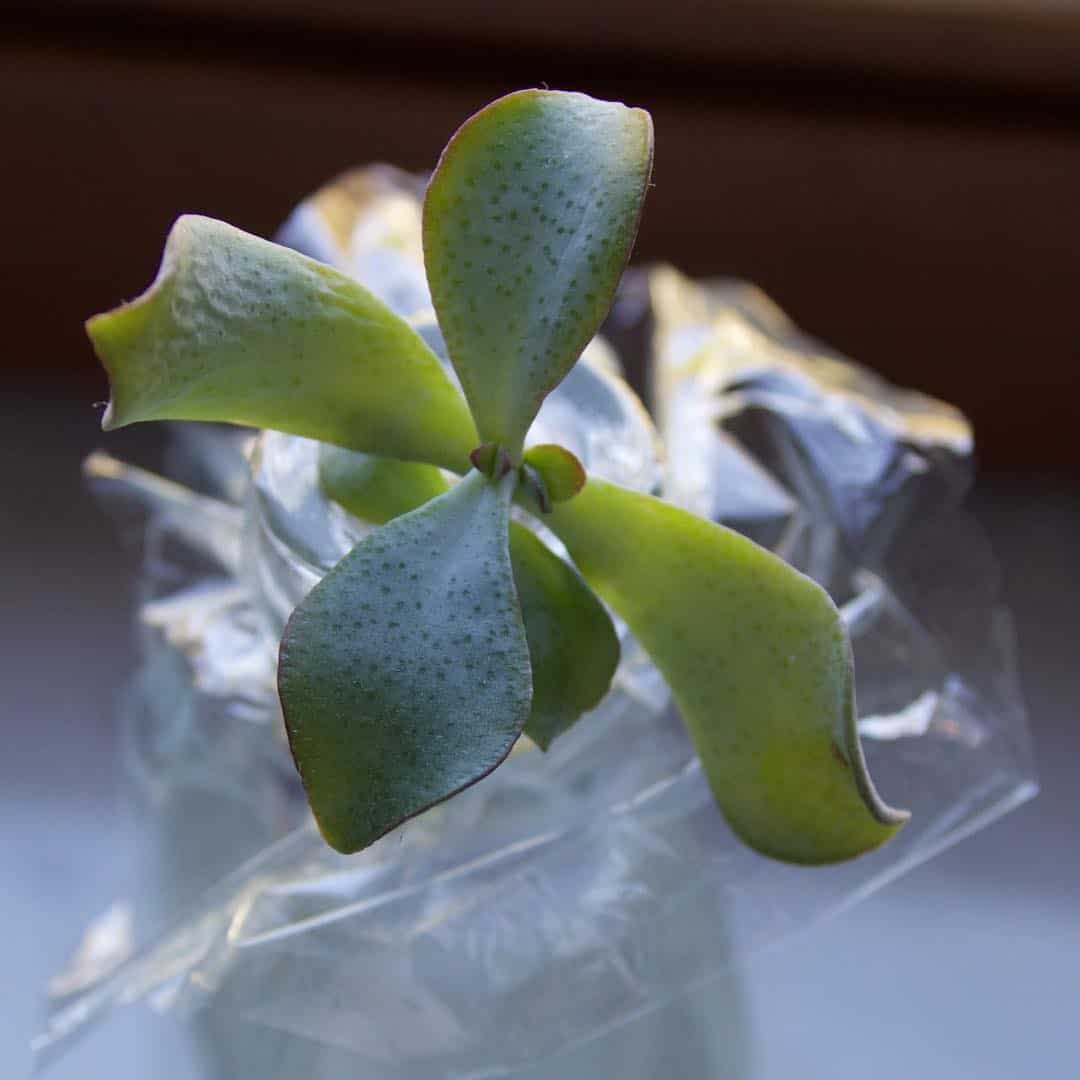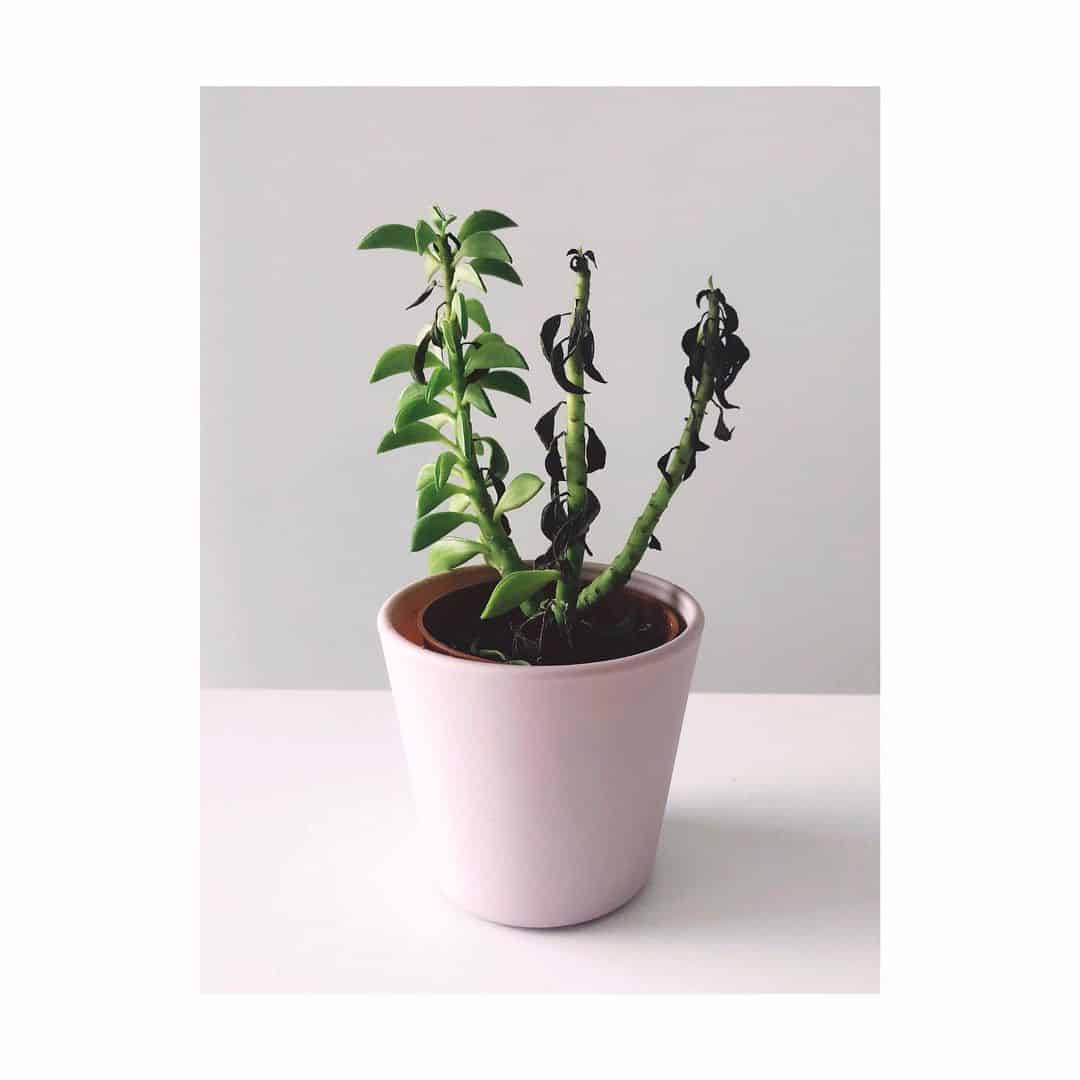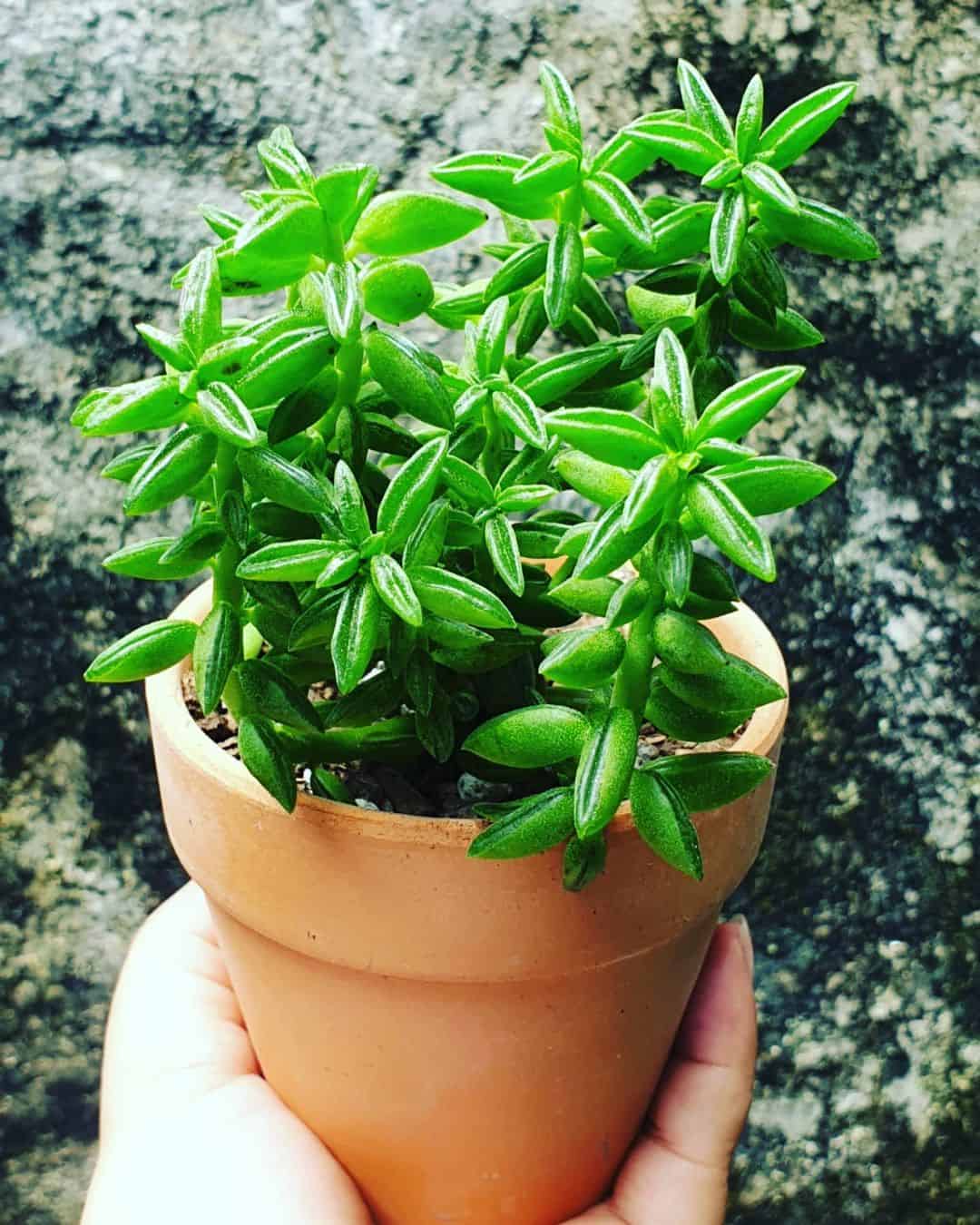New and unconventional peperomias gain in popularity every day, and one such plant is the Peperomia nivalis. This plant has beautiful succulent-like leaves shaped like a boat or taco.
But what makes it even more desirable is the ease with which you can care for it. You just have to provide it with proper sunlight, enough water, and a good potting medium for it to thrive.
Of course, there are some other things you’ll need to consider when caring for this peperomia variety, and we’ll examine them all in the following sections.
Sometimes, this plant can suffer from certain issues such as pests and diseases, and we’ll tackle these questions as well as bring you some clever ways of dealing with and preventing them.
For now, let’s start with the basic characteristics of this plant:
[table id=641 /]
Peperomia Nivalis Care
The basic peperomia plant care guide includes keeping the members of this genus in a location with bright indirect light, growing them in a well-draining soil, and watering once the top of the potting medium is dry.
You should also fertilize it to enhance its growth rate, and prune the diseased foliage so that your plant can remain healthy.
Repotting can also keep your plant thriving, and propagation will ensure you have amazing gifts for your friends and family or more plants for unique indoor decorations.
Now, let’s learn how to keep this plant thriving!
Light Requirements
This plant requires indirect light to thrive because the direct sun is too harsh for it and can damage its delicate foliage.
Although, you can keep it near an east or south-facing windowsill because this direct light is mild and won’t burn it.
If you only have room for your plants on a western window, you can close the curtains or place the P. nivalis a couple of feet away from it.
Finally, if you don’t have enough sunlight coming into your home, you can always use artificial lights to keep your plants healthy.
Water And Humidity
There are many different peperomia types with different watering needs, but when it comes to the P. nivalis, you’ll be happy to hear that it doesn’t require too much moisture.
It stores water in its fleshy, succulent-like foliage, and you’ll need to irrigate it every 7-10 days.
The main factor indicating your peperomia is thirsty is the soil. If the top of the potting mix is dry, you can water your plant at once, but if it isn’t, wait a couple of days before watering.
Of course, this plant requires more moisture during its growing season than in dormancy, which is why you can reduce the watering frequency by half in late fall or whenever your green buddy stops putting on new growth.
Humidity
This peperomia comes from South America, or Peru to be exact, and as such it thrives in environments with higher humidity.
Therefore, you should ensure that your relative indoor air moisture level is at least 50%.
Luckily, you can achieve this with a humidifier or by misting your peperomia leaves from time to time.
Another way of increasing humidity levels is by grouping plants with similar needs together, or moving your taco leaf peperomia to a room with higher air moisture, such as a kitchen or bathroom.
Temperature
The taco leaf peperomia flourishes in temperatures between 65 and 80 degrees Fahrenheit. Of course, it can tolerate slight fluctuations, but if the temperatures venture into any extreme, your plant would suffer.
Therefore, you should place it in a location where there are no drafts and keep it away from old windows, ACs, heaters, doors, hallways, and all other places where temperature swings are common.
Soil And Fertilizer
This plant thrives in peat and humus-based potting mediums with excellent drainage. You can make this substrate yourself by mixing equal parts peat moss and perlite or some other coarse material.
And if you don’t have enough time to make a potting mix yourself, you can always get a ready-made one. Just make sure the soil is well-draining and aerated, and your peperomia will thrive.
Also, these plants require slightly acidic or neutral mediums, which is why you should always check the soil pH level before planting. Inadequate pH can hinder moisture and nutrient absorption, which would hurt your plant.
Fertilizer
Peperomias generally don’t require too much fertilizer to thrive, which is why we always have to be careful about the food we use and the frequency with which we apply it.
The general rule is to fertilize your P. nivalis only during its growing season so as to prevent the risk of overfertilization.
You don’t have to feed it more than once a month with a liquid fertilizer, and if you opt for a slow-release variety, you will need to fertilize your plant only 2-3 times a year, depending on the product.
Use a well-balanced general-purpose fertilizer, and always irrigate your peperomia after feeding it to make the nutrients available and prevent fertilizer burn on the roots.
Repotting
When we look at the care guide for the Peperomia angulata, we notice that one of the things on it is repotting.
Well, all peperomias will require a larger container at some point, and the same goes for your Peperomia nivalis. However, this plant does like to be potbound a bit, so you won’t have to repot it very frequently.
Instead, you can replace the soil and move it to a larger container every 1-2 years.
When repotting, ensure that the new pot isn’t too large (you can up it by one size) and that it has drainage holes in the bottom to avoid waterlogging.
Once you have everything ready, you can take your plant out of its old planter, separate the roots a bit if they’re bound together, and then place it in its new home.
First, place some substrate in the bottom, then put your peperomia in it and fill the pot with more potting mix.
Water the repotted plant thoroughly (until you notice moisture coming from the drainage holes), and take it back to its usual place once the excess water drains away.
Pruning
The Peperomia nivalis is a fairly low-maintenance plant which doesn’t require extensive pruning.
But if you want to entice new growth and get rid of old, diseased, and damaged leaves, you can do so at the beginning of the growing season.
You can remove the old growth with your fingers or use sharp pruners or a knife; just make sure to sterilize the tools to avoid transferring any bacteria or fungi onto your healthy peperomia.
Pruning will make your plant bushier and help it grow healthily.
Propagation
You can multiply the P. nivalis from cuttings, which root very successfully. You can take leaves or stems to propagate it, and we’ll discuss each method in more detail in the following paragraphs.
Propagation By Stem Cuttings
Step 1. Take a healthy cutting with a couple of nodes and wait a couple of days so that it can form a callus over the wound.
Step 2. Remove the bottom leaves and plant the cutting in a well-draining soil. Put a plastic bag over the cutting to maintain high humidity levels and ensure that the medium is constantly moist.
Step 3. Place your peperomia cutting in a warm location with bright dappled sunlight until the root system develops. Monitor the plant, and once you notice new growth, you’ll know the plant has grown roots as well.
* You can also reproduce the stem cuttings in water. Simply change the medium every couple of days and ensure that no leaves are submerged to avoid contamination. Transplant the cuttings to the potting medium once the roots are no longer transparent.
Propagation By Leaf Cuttings
Step 1. Select a couple of healthy leaves with petioles. Let them sit for a day to form a callus before planting since that can increase the propagation success rate.
Step 2. Place the foliage in a nursery tray or a pot filled with moist seed-starting mix (such as a blend of equal amounts perlite and peat moss or coco coir).
Step 3. Plant the leaves four inches apart if you’re starting them in the same container. You can pin them to the medium with hairpins to keep them in place.
Step 4. Place a plastic bag over the leaf cuttings to trap moisture and create the perfect environment for rooting.
Step 5. Move the leaves to a warm and bright spot, and keep the soil moist.
The cuttings will soon develop roots, and once they put on some new growth you can replant them into separate containers.
Common Issues
Even though this radiator plant is fairly resistant to pests and diseases, it can still trouble you the same way, just like a Rana Verde peperomia or any other species.
However, you can easily avoid dealing with bugs and fungal infections if you care for your plant properly. Expose it to plenty of sunlight, water it only when the top part of the potting soil gets dry, and try not to wet its foliage.
But if your plant does succumb to infestations and infections, here’s what you can do.
Pests
The most common bugs that infest this plant are aphids, spider mites, mealybugs, and whiteflies.
If the infestation isn’t extensive, you can pick them off by hand or use a cotton swab dipped in rubbing alcohol and remove them one by one (just be careful not to touch your plant since you could burn it).
And if there are too many pests to deal with, you can use insecticides such as horticultural oils and insecticidal soaps.
Diseases
The main diseases that afflict this plant are leaf spot and root rot, and both of them appear as a result of inadequate watering.
Leaf Spot
Leaf spot is caused by constantly wet leaves, and if you always irrigate your plant at its base, you won’t have to deal with these dark lesions that spread on your peperomia leaves.
If you do notice this disease, simply cut away the infected foliage and get rid of it. (Don’t add them to your compost bin or pile since they can spread the fungi.)
Root Rot
Root rot, on the other hand, is caused by too much moisture in the soil, which we cause by frequent watering, although heavy soils that retain too much water and pots without drainage holes can increase the risk of getting this disease.
Therefore, plant your P. nivalis in a well-drained potting medium and a pot with holes in the bottom, and only water it once the soil mix begins to dry out.
If you suspect that your plant has root rot because it’s growing slowly, its leaves have turned yellow, it droops, or you can smell an unpleasant odor coming from the soil, you should examine its roots.
Mushy, soft, brown, and dark roots are infected with root rot, and you should remove them with sterilized and sharp pruners, and repot your peperomia into fresh growing medium and a clean planter.
Peperomia Nivalis vs Peperomia Axillaris
The taco leaf peperomia is quite similar to the Peperomia axillaris, also known as the taco plant.
Both of these species have taco-shaped foliage, but the P. nivalis has longer and narrower leaves. The P. axillaris is usually shorter and thicker than the nivalis.
Luckily, taco plant care is almost identical to this one, so if you mistake these plants for one another, or you decide to get them both, you won’t cause any issues by following the same plant care guide.
FAQ
Why are my Peperomia nivalis leaves falling off?
The most common cause of leaf drop is inadequate watering, but it is usually accompanied by other symptoms that can help you decide whether you need to use more or less moisture.
For instance, if the foliage is yellow and the potting mix wet, you should reduce the watering frequency.
And if the leaves are drooping and turning brown and crispy, you should irrigate your plant.
Your peperomia can also drop leaves if you’ve just repotted it, as it goes through transplant shock (which is normal, so just give it time), or because you’ve changed its location.
Sudden temperature changes can stress out the plant, so make sure to avoid it.
How can you tell if a peperomia is healthy?
Healthy plants have a glowy and vibrant color, stand upright, and there are no discolored or deformed leaves on them.
Their soil isn’t wet or bone dry, and there’s no unpleasant smell coming from the pot.
Does the peperomia flower?
Yes, peperomia plants do produce blossoms, but they rarely do so when grown indoors.
But don’t be alarmed by this; their inflorescences aren’t showy, rather they look like long, thin shoots that are usually pale green or brown.
Final Thoughts
The Peperomia nivalis is a succulent-like plant due to its fleshy, taco-shaped leaves. But unlike regular succulents, this one requires a little bit more attention.
To grow a healthy P. nivalis, you need to keep it in a location with bright indirect light, water it whenever the top part of the growing medium gets dry, keep it in higher humidity levels, and ensure it has a potting substrate with excellent drainage.
You also need to repot it every couple of years, and you don’t have to prune it unless you notice discolored and diseased foliage.
This plant can get attacked by pests and diseases (although it’s not very common), and you should treat it as soon as you notice something’s wrong with it to prevent these issues from spreading.
Enjoy this amazing peperomia, and until next time!

